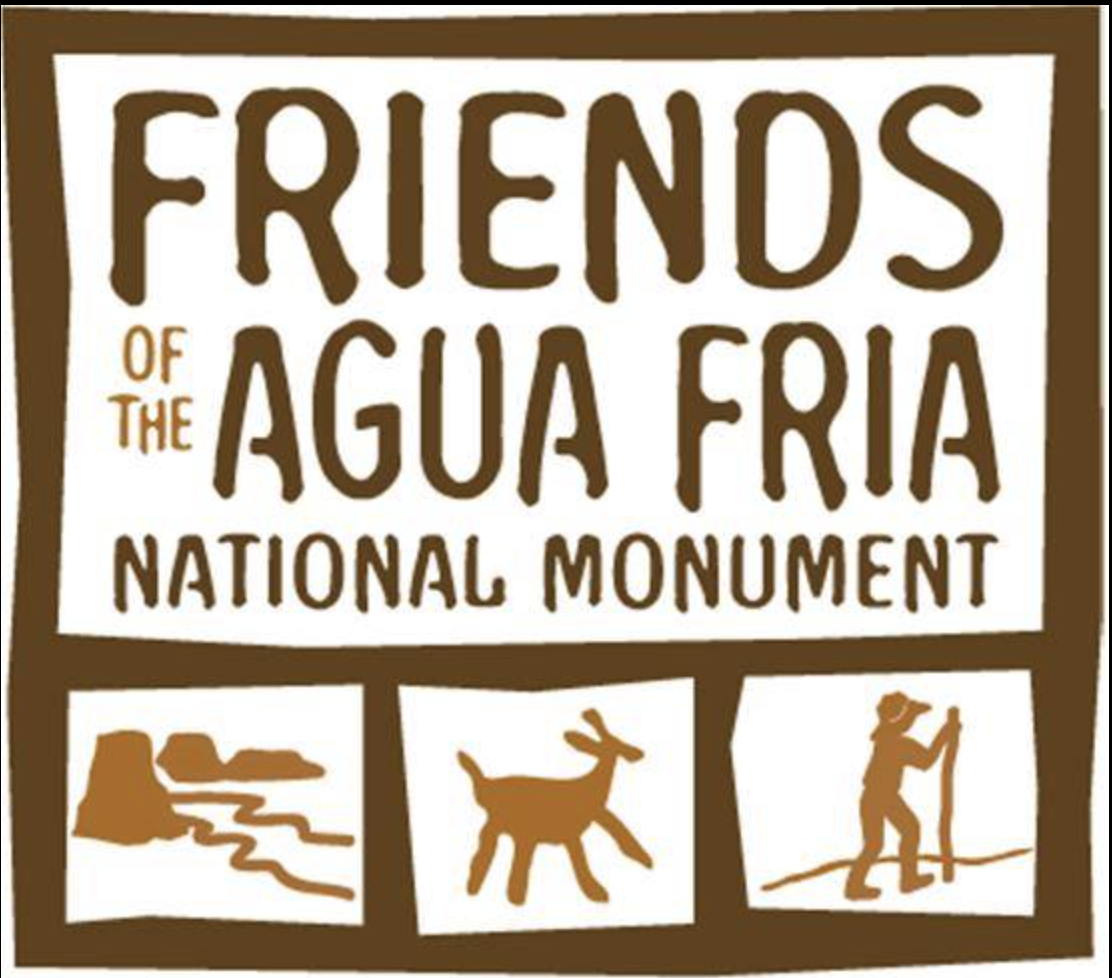 |
History of the Agua Fria National MonumentMay 2022 |
The Agua Fria National Monument (AFNM) was established in January of 2000. Long before then, it was known as a unique and scenic landscape of vast desert grasslands and spectacular canyons, with ancient stone structures and mysterious rock art left by prehistoric residents. Early archaeologists generally opted to explore areas less rugged and more accessible than Perry Mesa. But J. W. Simmons, an amateur archaeologist from Prescott, explored and carefully documented the large pueblo sites during the 1930's. His work was supported by the Federal Writers' Project, funded by the federal government during the Great Depression.
.jpg) By the 1970's, the federal Bureau of Land Management (BLM) administered parcels of land on Perry Mesa and recognized its importance as an archaeological landscape. The BLM took action to designate the Perry Mesa Archaeological District on the National Register of Historic Places. In the late 1980's, the agency acquired the state lands on Perry Mesa and Black Mesa, thus preserving the entire landscape of mesas, canyons, and the Agua Fria River. The BLM cooperated with the Tonto National Forest, which encompassed lands in the eastern part of Perry Mesa.
By the 1970's, the federal Bureau of Land Management (BLM) administered parcels of land on Perry Mesa and recognized its importance as an archaeological landscape. The BLM took action to designate the Perry Mesa Archaeological District on the National Register of Historic Places. In the late 1980's, the agency acquired the state lands on Perry Mesa and Black Mesa, thus preserving the entire landscape of mesas, canyons, and the Agua Fria River. The BLM cooperated with the Tonto National Forest, which encompassed lands in the eastern part of Perry Mesa.
The two federal agencies conducted a study of past damage to prehistoric sites from looting and vandalism, while also cooperating to expand the formal boundaries of the Perry Mesa Archaeological District to nearly 50,000 acres. The agencies also participated in the Agua Fria Grasslands Coalition, to preserve and improve management of the area's important wildlife and ecological resources, such as native fish species and herds of pronghorn. The BLM also recommended that the Agua Fria River, roughly from Cordes Junction to Black Canyon City, was suitable for designation to the National Wild and Scenic Rivers System for its outstanding scenic, cultural, free-flowing, and wildlife values.
By 1999, all of these efforts caught the attention of Bruce Babbitt, then the Secretary of the Interior. An Arizona native and former Governor, Babbitt was familiar with the area as one of his former hiking spots. He was also intrigued by an article published by the Museum of Northern Arizona, in which archaeologists described Perry Mesa as a "prehistoric gated community" designed for cooperation in defense against enemy attacks. He visited Perry Mesa and hiked the Agua Fria River Canyon and the rugged round trip to Baby Canyon Pueblo.
Secretary Babbitt had a new vision for national monuments, which had been almost exclusively administered by the National Park Service. He wanted to give the BLM the opportunity to have its own monuments, which would encompass landscapes, rather than specific locations of historic importance. These areas could emphasize the protection of important natural and cultural resources, while also allowing for some traditional uses such as hunting and ranching. There was a pressing need to protect resources at risk, such as the archaeological sites that had been damaged by looting and vandalism.
At the rim of the Grand Canyon in January of 2000, under the authority of the Antiquities Act of 1906, President William Clinton signed the proclamation creating the AFNM for the protection of its important scientific, natural, and cultural values. The Agua Fria was among the first three national monuments to be administered by the BLM.
